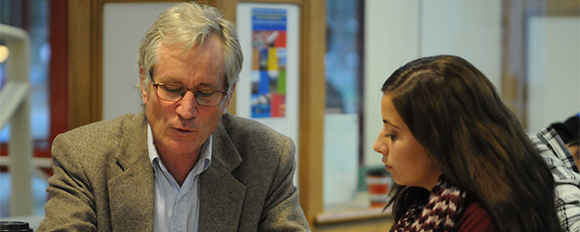Differences in leaf physiology among juvenile pines and oaks following high-severity wildfire in an Arizona Sky Island Mountain range
Document Type
Article
Publication Date
2-2020
Abstract
Recent increases in wildfire severity are converting pine-oak (Pinus-Quercus) woodland to oak shrubland in many sites in the southwestern United States. A key mechanism underlying this transition is the vigorous resprouting capacity of oaks compared to low regeneration rates in pines following wildfire. Differences among species in leaf physiological characteristics may also contribute to such vegetation type conversions, especially in the context of recent increased regional aridity. To that end, we evaluated variation in leaf functional traits in post-fire recruits five years after the 2011 Horseshoe Two in the Chiricahua Mountains, Arizona, USA. We measured a suite of functional traits in two pines (Pinus engelmannii and P. leiophylla) and two oaks (Quercus hypoleucoides and Q. arizonica), including leaf gas exchange, leaf pigment concentrations, leaf spectral reflectance, and wood xylem δ13C, δ18O isotopes, and integrated water use efficiency (iWUE). The four study species displayed a range of plant functional traits tied to desiccation tolerance. P. engelmannii seedling recruits presented invariably low maximum photosynthetic rate (Amax), stomatal conductance (gs), and transpiration (E), and high relative leaf water content during the peak of the May-June drought, a response strongly indicative of a desiccation-avoidant leaf that prioritizes water conservation over carbon fixation in arid conditions. In contrast, resprouts of both oaks displayed leaf desiccation tolerance, with high levels of gs and E and low relative leaf water content. Gas exchange in P. leiophylla resprouts was more similar to the oaks, except for relative water content, which was similar to that of P. engelmannii. Compared to the other two species, P. engelmannii and Q. hypoleucoides exhibited significantly higher δ13C, δ18O and iWUE values—a pattern that appears to have arisen from different mechanisms in the two species. In desiccation-avoidant P. engelmannii, low instantaneous gs and high δ18O suggested that low stomatal conductance rather than high photosynthetic rates led to high iWUE, whereas lower δ18O and very high pigment concentrations in Q. hypoleucoides suggest a more important role for Amax in this species. Neither fire severity nor physiography influenced the physiological responses in any of the four species, suggesting that the expression of resprout and seedling functional traits is fixed. These results raise the possibility that differences in leaf physiological characteristics contribute to the regeneration success of some oak species and the poor seedling establishment of obligate seeder pines, such as P. engelmannii, after high-severity wildfire in the American Southwest.
Publication Title
Forest Ecology and Management
Recommended Citation
Helen M. Poulos, Andrew M. Barton, Graeme P. Berlyn, Dylan W. Schwilk, Charles E. Faires, Wyatt C. McCurdy. 2020. Differences in leaf physiology among juvenile pines and oaks following high-severity wildfire in an Arizona Sky Island Mountain range. Forest Ecology and Management, 457. https://doi.org/10.1016/j.foreco.2019.117704.


